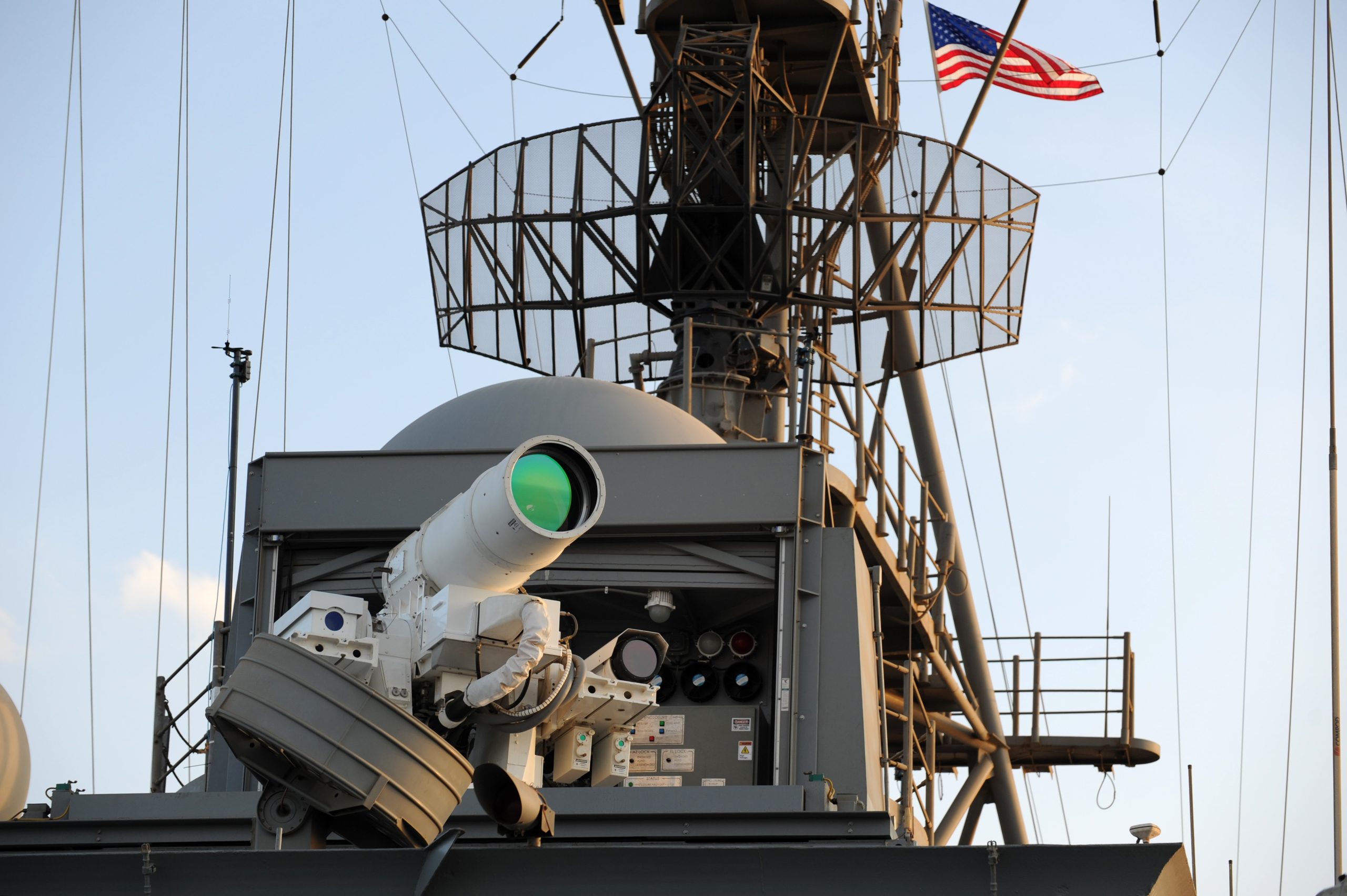
In recent encounters with Houthi drones and rocket threats, the U.S. Navy has curiously refrained from utilizing the advanced directed-energy weapons it has rigorously developed. (Photo: Defense One)
Why the U.S. Navy is Hesitant to Deploy Laser Defense Systems Against Houthi Drones
In recent encounters with Houthi drones and rocket threats, the U.S. Navy has curiously refrained from utilizing the advanced directed-energy weapons it has rigorously developed. The prevailing method of defense, involving costly guns and missiles, contrasts starkly with the theoretical potential of laser technology capable of intercepting threats at a fraction of the cost. The Navy’s reluctance to adopt laser defense systems, documented in a recent Congressional Research Service report, hints at a paradox that has gripped the service’s efforts to replace high-priced missiles with more efficient energy weaponry.
While U.S. officials have effectively intercepted Houthi drones and rockets using expensive interceptors, they have notably skirted the mention of next-generation directed-energy weapons, despite years of meticulous development. Although the Navy has demonstrated proficiency in neutralizing Iranian-made drones, concerns about employing $11 million interceptor missiles against targets valued at mere thousands have sparked contemplation around the need for economically viable alternatives.
This perplexing price gap has driven the military’s pursuit of lasers and other directed-energy weapons, promising cost-effective solutions and virtually limitless interception capabilities, notwithstanding the challenges entailed in their deployment.
READ ALSO: US Navy Helicopter Strike Sparks Warning From Houthi Rebels: ‘Consequences’ Loom
The potency of directed-energy weapons was demonstrated as early as 2014, with the effective deployment of lasers aboard the USS Ponce, marking the inception of a transformative era in naval defense strategies. Presently, the U.S. has deployed 30-kw Optical Dazzler systems on eight vessels, marking an evolution in defensive capabilities with the potential to redefine future encounters with aerial threats. The Navy’s strategic maneuvering, reflective of its endeavor to balance operational efficiency with budgetary considerations, underscores the intricate decision-making processes that shape the nation’s defense priorities, heralding a paradigm shift in the assessment of cost-efficient defense solutions.
In facing the escalating proliferation of Houthi aerial threats, the Navy’s contemplation of laser defense systems underlines a discerning approach toward optimizing resource allocation and harnessing advanced technologies for the protection of national interests. The evolving narrative surrounding directed-energy weapons signals a pivotal juncture in the domain of naval defense, reflecting the quest for innovative, cost-effective solutions to confront contemporary security challenges.
READ ALSO: Navigating The Waves Of Security: US Navy Thwarts Houthi Attack In Red Sea, Militias Defiant




![Tyson Foods Plant [Photo: Food Manufacturing]](https://southarkansassun.com/wp-content/uploads/2023/08/iStock_1185520857__1_.5e441daa51cca-600x337.jpg)








![Silverado Senior Living Management Inc. [Photo: Los Angeles Times]](https://southarkansassun.com/wp-content/uploads/2023/10/download-6-4-600x337.jpg)

![China's Wuhan Institute of Virology [Photo: Nature]](https://southarkansassun.com/wp-content/uploads/2023/09/d41586-021-01529-3_19239608-600x337.jpg)















